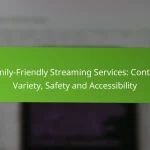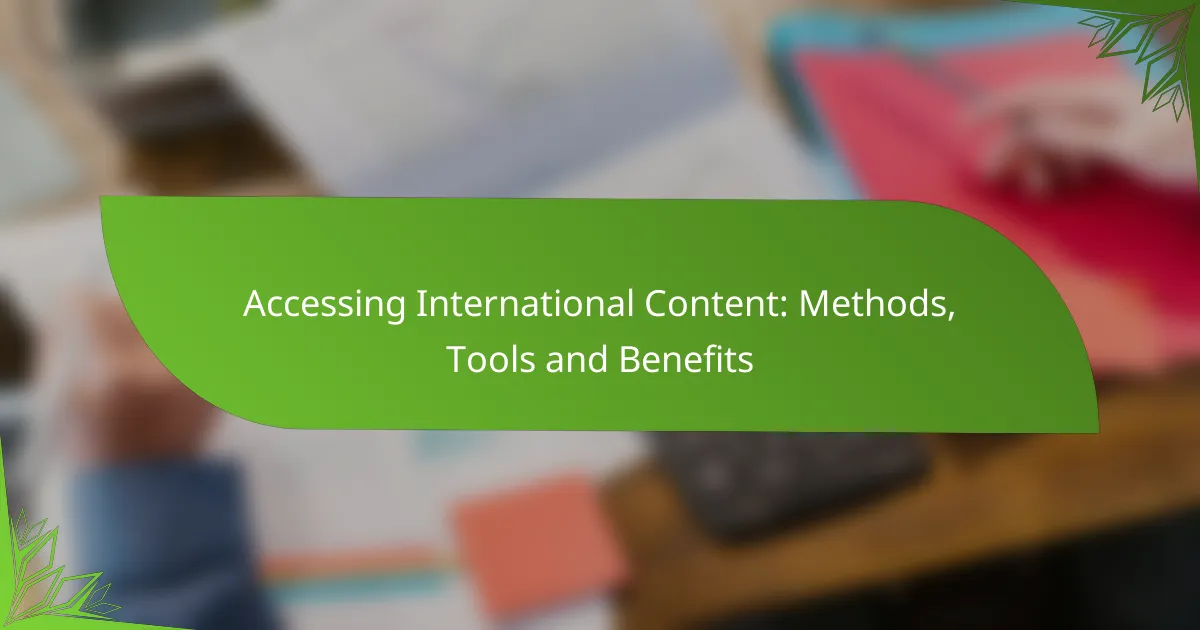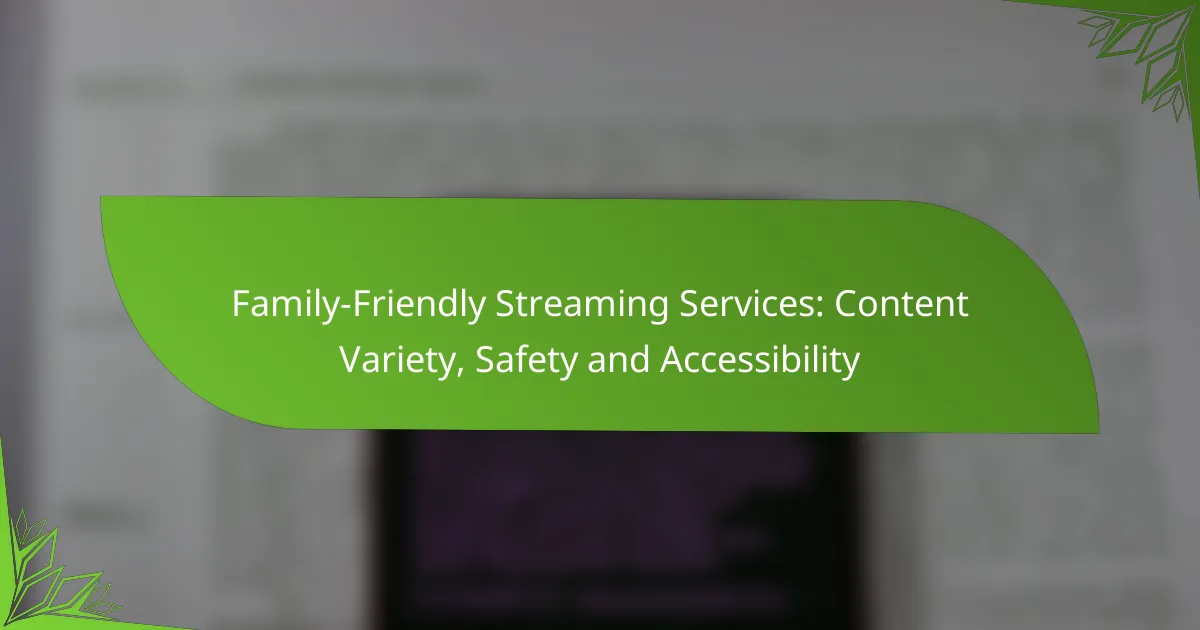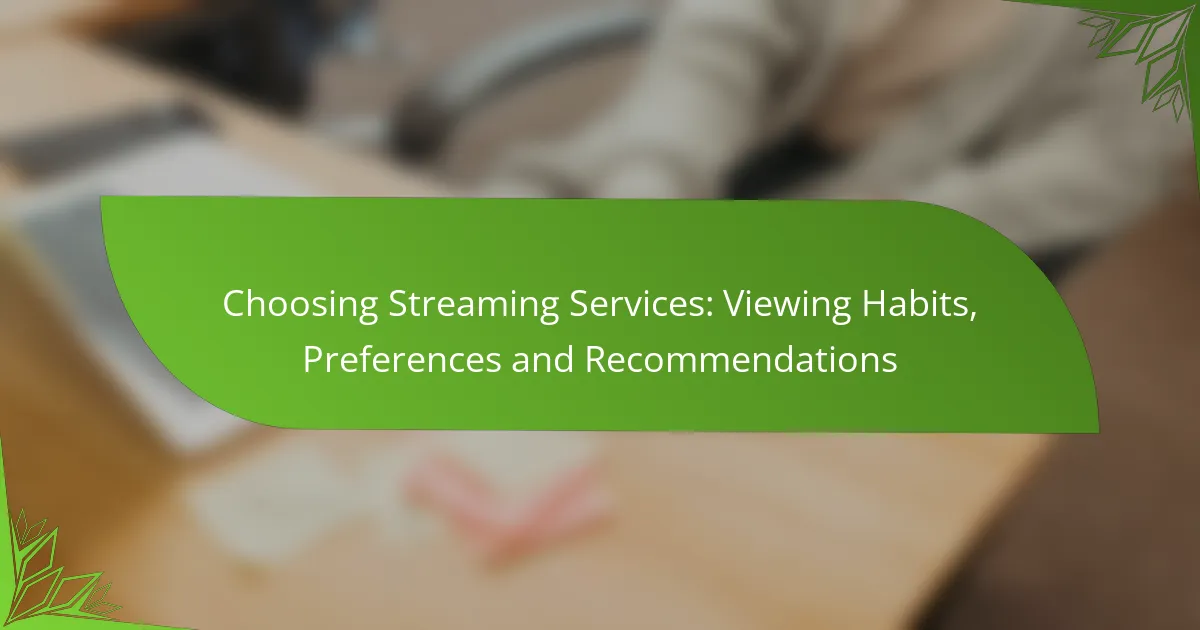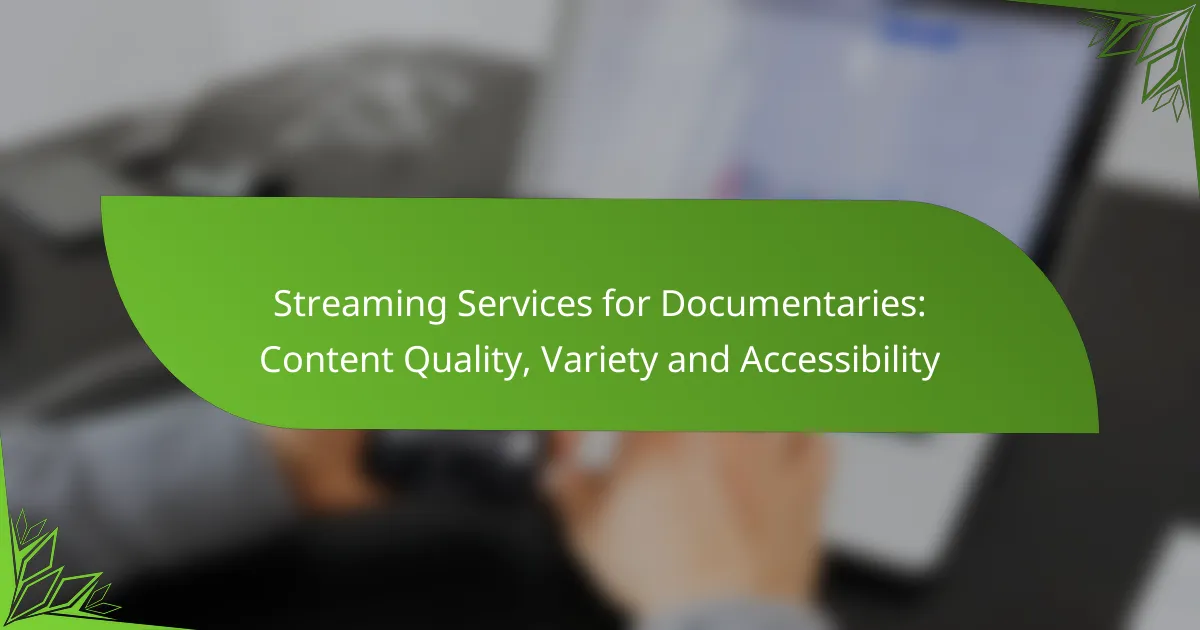Accessing international content effectively requires the use of various tools and methods designed to bypass geographical restrictions. By leveraging these resources, users can overcome language barriers and ensure privacy, ultimately enhancing their ability to explore diverse global perspectives. The benefits of accessing such content include improved cultural awareness and informed decision-making in an increasingly interconnected world.
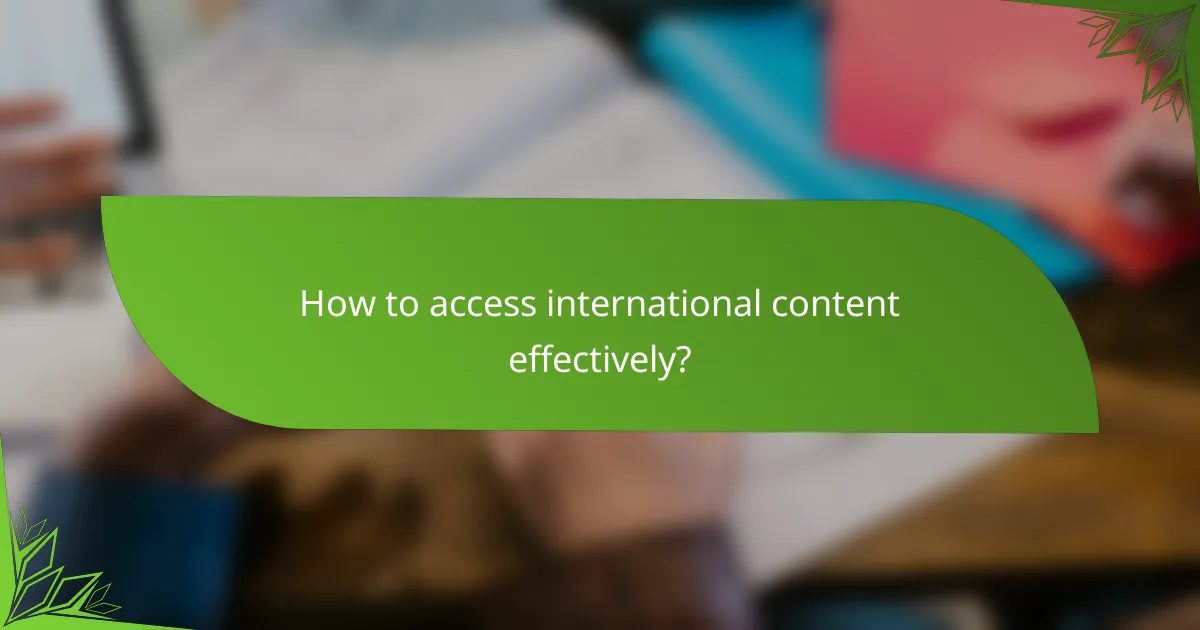
How to access international content effectively?
Accessing international content effectively involves using various tools and methods that can bypass geographical restrictions. The right approach will depend on your specific needs, such as the type of content you want to access and the level of privacy you require.
Using VPN services
VPN services allow you to connect to the internet through servers located in different countries, masking your IP address and making it appear as though you are browsing from that location. This method is widely used for accessing streaming services and websites that are restricted in certain regions.
When choosing a VPN, look for one with a strong reputation for privacy, good speeds, and a wide range of server locations. Many reputable VPNs offer subscription plans that range from a few dollars to around ten dollars per month, depending on the features provided.
Utilizing proxy servers
Proxy servers act as intermediaries between your device and the internet, allowing you to access content from different locations. They can be useful for bypassing restrictions but may not provide the same level of security and privacy as VPNs.
Free proxy services are available, but they often come with limitations such as slower speeds and potential data security risks. Paid proxies typically offer better performance and reliability, with costs varying based on the provider and features.
Employing content delivery networks
Content Delivery Networks (CDNs) distribute content across multiple servers worldwide, improving access speed and reliability for users in different regions. While primarily used by content providers, understanding how CDNs work can help users find alternative access points for international content.
For example, if a website is slow to load from your location, it might be beneficial to check if they utilize a CDN and access the content through a different server. This method is more technical and may require some knowledge of web tools.
Leveraging international search engines
International search engines can help you find content that may not be indexed by local search engines. By using search engines specific to other countries, you can discover websites and resources that are otherwise hidden.
Consider using search engines like Yandex for Russia or Baidu for China to find localized content. Adjusting your search settings to target specific regions can also yield better results for international content.
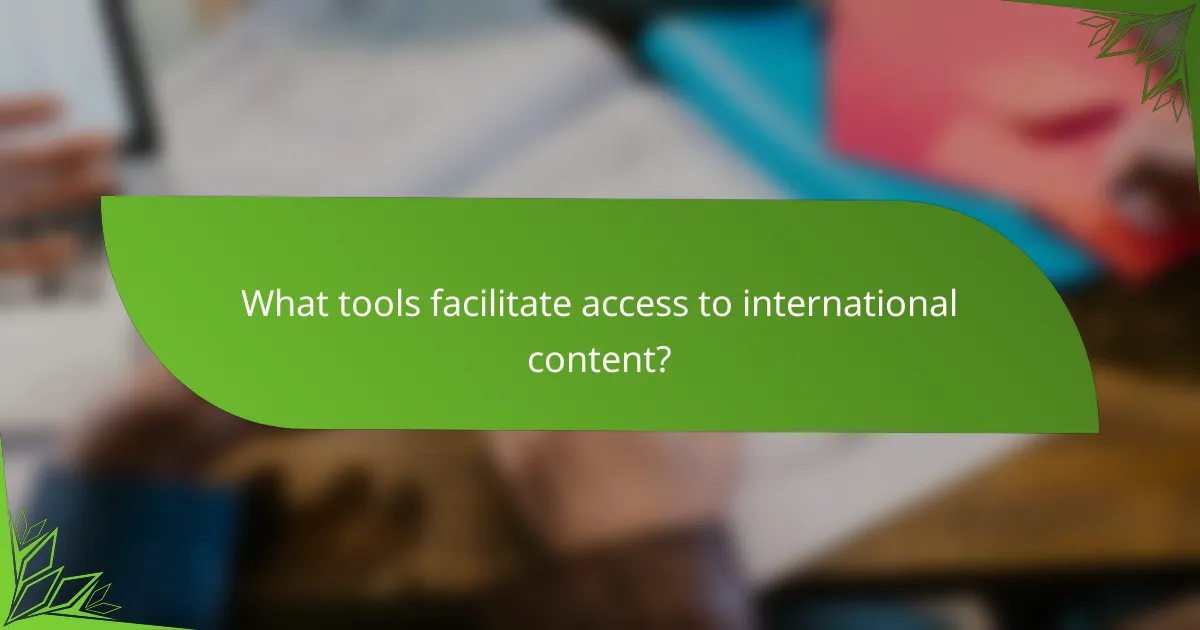
What tools facilitate access to international content?
Several tools can help users access international content by overcoming language barriers, ensuring anonymity, and aggregating diverse information. Utilizing these tools effectively can enhance your ability to explore global resources and perspectives.
Google Translate for language barriers
Google Translate is a powerful tool that allows users to translate text and web pages between numerous languages. It supports over 100 languages, making it a go-to solution for breaking down language barriers when accessing international content.
When using Google Translate, consider its limitations, such as occasional inaccuracies in complex phrases or idioms. For best results, use simple language and verify critical translations with native speakers when possible.
Tor Browser for anonymity
The Tor Browser is designed to provide users with anonymity while browsing the internet. By routing your connection through multiple servers, it helps protect your identity and location, making it easier to access content that may be restricted in your region.
While Tor enhances privacy, it can slow down your browsing speed. Users should be aware that some websites may block Tor traffic, so it’s advisable to have alternative access methods ready for content that is essential.
Content aggregation platforms
Content aggregation platforms, such as Feedly or Flipboard, compile articles and resources from various sources into one convenient location. These tools allow users to follow international news and trends without having to visit multiple websites.
When choosing a content aggregator, look for features like customizable feeds and language options. Be cautious of relying solely on these platforms, as they may not always provide comprehensive coverage of niche topics or local perspectives.
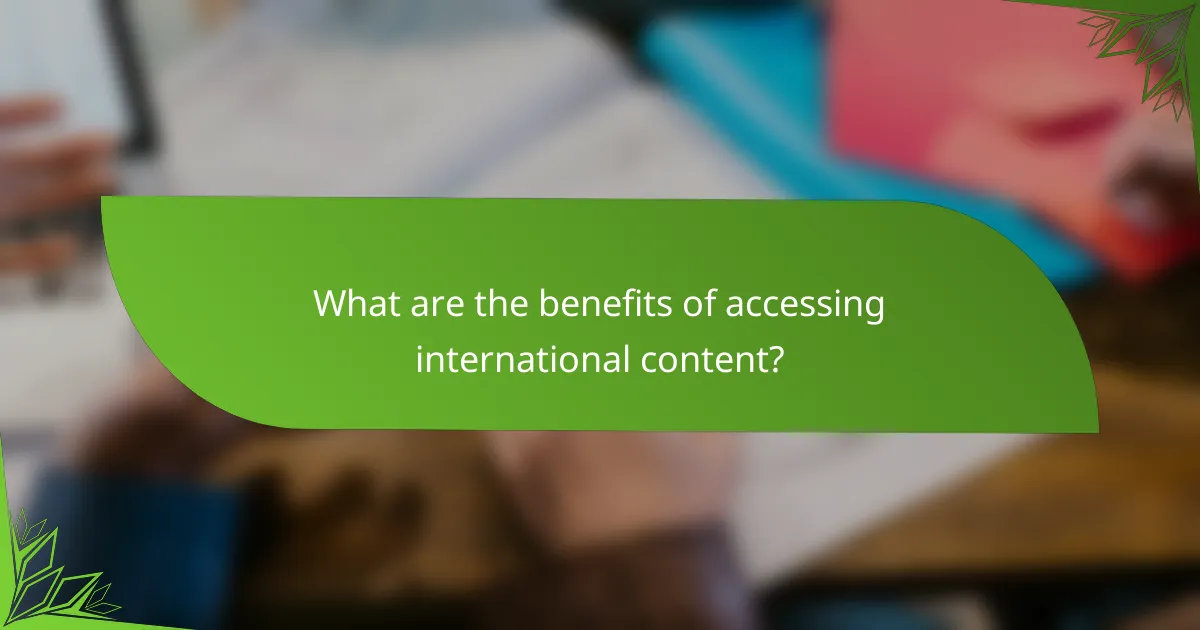
What are the benefits of accessing international content?
Accessing international content offers numerous advantages, including exposure to varied viewpoints and enhanced understanding of global markets. These benefits can lead to better decision-making and improved cultural awareness, which are essential in today’s interconnected world.
Diverse perspectives and insights
International content provides access to a wide range of viewpoints that can enrich understanding and foster innovation. By engaging with materials from different cultures, individuals and organizations can challenge their assumptions and broaden their horizons.
For instance, reading articles or watching videos from various countries can reveal alternative solutions to common problems. This diversity of thought can be particularly beneficial in fields like technology, business, and social sciences.
Enhanced market research opportunities
Accessing international content allows businesses to gather valuable insights into foreign markets, consumer behavior, and emerging trends. This information can inform product development, marketing strategies, and competitive analysis.
Utilizing tools like global market reports and international news platforms can help identify opportunities and threats in specific regions. Companies can leverage this knowledge to tailor their offerings to meet local demands effectively.
Improved cultural understanding
Engaging with international content fosters a deeper appreciation of different cultures, traditions, and social norms. This understanding is crucial for building strong relationships in both personal and professional contexts.
For example, learning about cultural practices through documentaries or literature can enhance communication skills and reduce misunderstandings. Organizations that prioritize cultural competence often see improved collaboration and employee satisfaction.
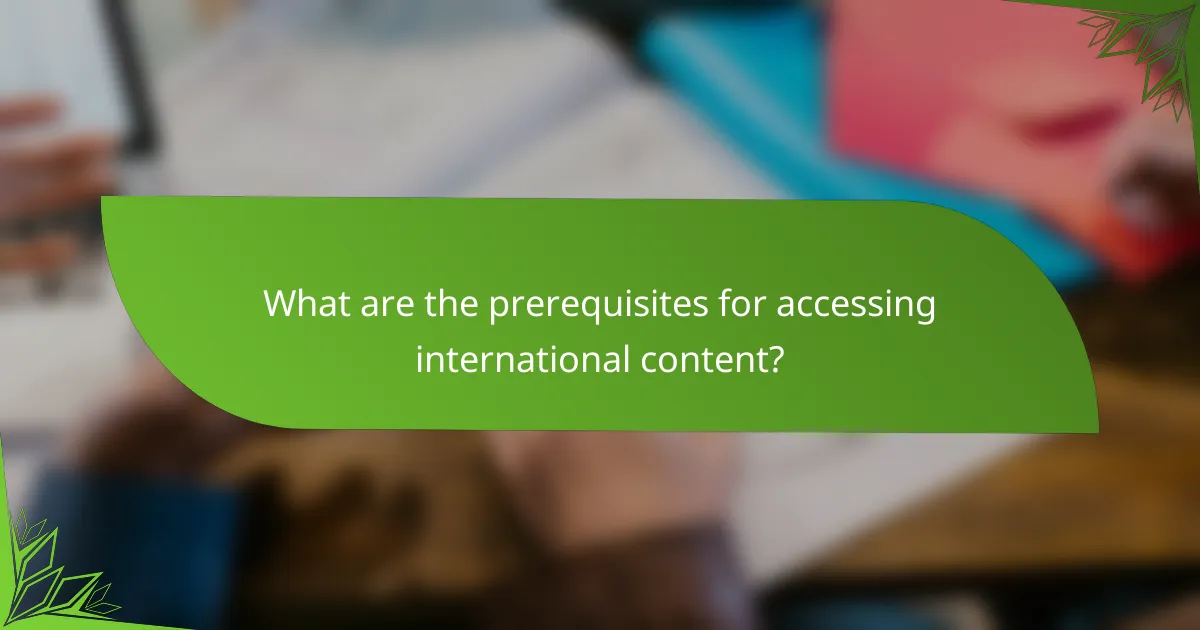
What are the prerequisites for accessing international content?
To access international content effectively, you need to understand local regulations and identify target audience preferences. These factors ensure compliance and relevance, enhancing the chances of successful engagement with diverse markets.
Understanding local regulations
Familiarizing yourself with local regulations is crucial when accessing international content. Different countries have varying laws regarding copyright, data protection, and censorship that can impact content availability and distribution.
For instance, the General Data Protection Regulation (GDPR) in the European Union imposes strict rules on data handling, while some countries may have specific content restrictions based on cultural norms. Always research the legal landscape of your target market to avoid potential penalties.
Identifying target audience preferences
Understanding the preferences of your target audience is essential for tailoring content that resonates. This involves researching cultural nuances, language variations, and consumption habits specific to each region.
For example, while video content may be popular in one country, written articles might be more effective in another. Conduct surveys or analyze existing data to gather insights on what formats and topics engage your audience best.
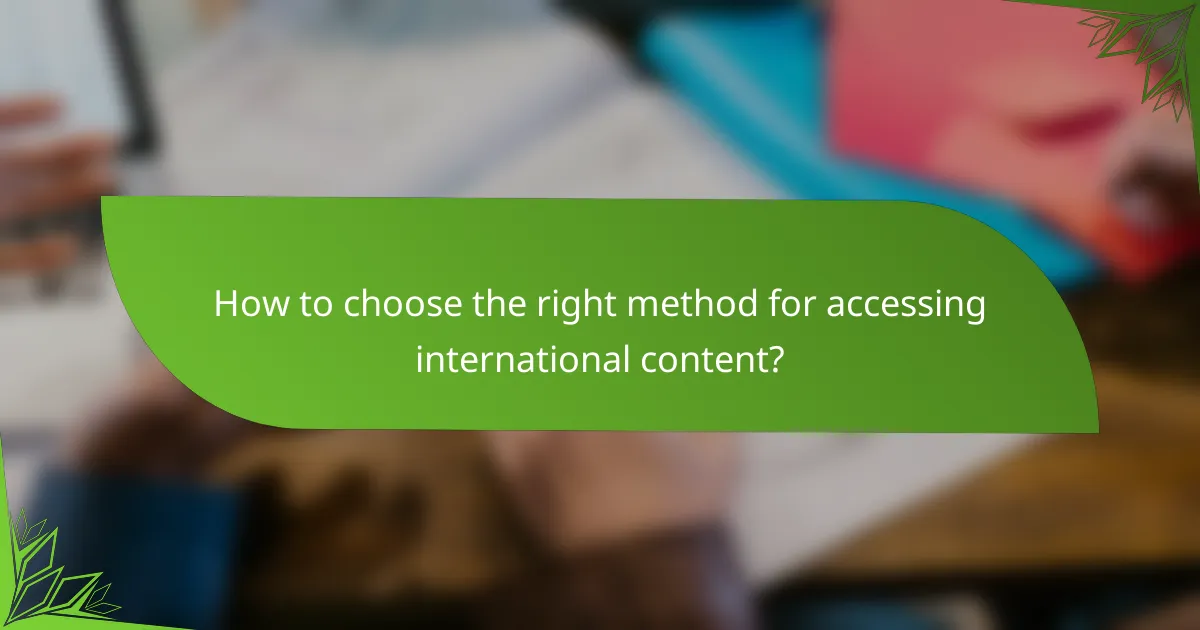
How to choose the right method for accessing international content?
Selecting the appropriate method for accessing international content involves evaluating security, cost, and user experience. Each factor plays a crucial role in ensuring that the chosen approach meets your needs while providing a seamless experience.
Assessing security and privacy needs
When accessing international content, security and privacy are paramount. Consider methods that offer strong encryption and comply with data protection regulations, such as GDPR in Europe. Using a reputable VPN or secure proxy can help protect your data from potential breaches.
Evaluate the privacy policies of the tools you plan to use. Ensure they do not log your activity or share your information with third parties. This is particularly important if you are accessing sensitive or personal content.
Evaluating cost-effectiveness
Cost is a significant factor when choosing a method for accessing international content. Compare subscription fees for VPN services, proxy servers, or content delivery networks (CDNs) to find a solution that fits your budget. Many services offer tiered pricing, so assess your needs to avoid overpaying for unnecessary features.
Look for free or low-cost options, but be cautious. Free services may compromise on security or limit bandwidth, which can affect your overall experience. A mid-range paid service often provides a better balance of cost and quality.
Considering user experience
User experience is critical when accessing international content. Choose methods that are easy to set up and use, ensuring minimal disruption to your browsing. A user-friendly interface can save time and reduce frustration, especially for those less tech-savvy.
Additionally, consider the speed and reliability of the service. High latency can lead to buffering and slow loading times, detracting from the overall experience. Look for services with positive user reviews regarding performance and customer support to ensure a smooth experience.
